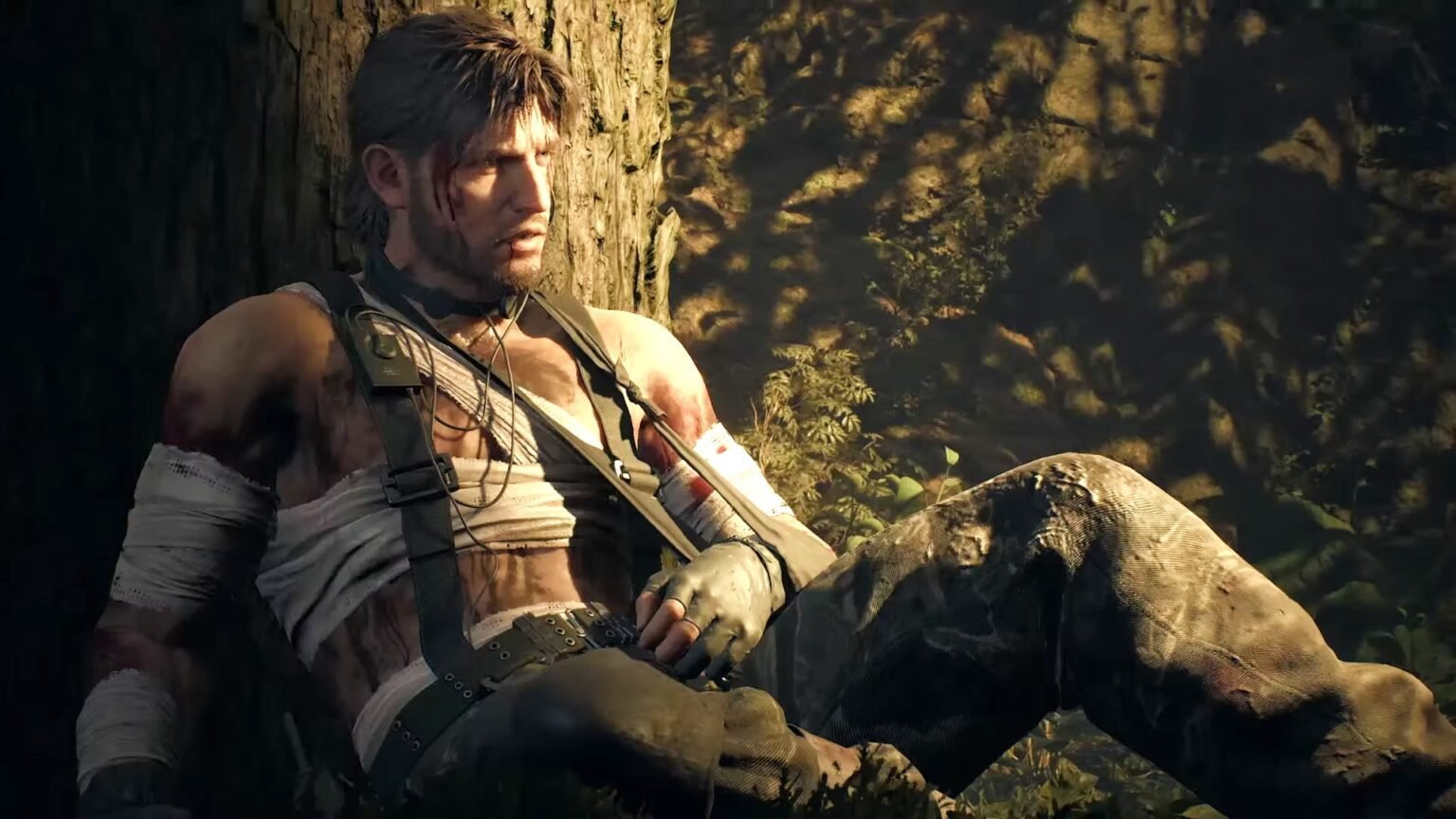Metal Gear Solid Delta: Snake Eater has one of the most iconic, bizarre, and brilliant moments from the original Metal Gear Solid 3 game, which is the ladder scene. This isn’t just a simple scene; it’s a defining part of what made the original so special, and the fact that the developers are keeping it in is a huge deal. It’s not about action or explosions; it’s about a feeling.
The whole point of this sequence is its deliberate pace. There are no enemies, no threats, and nothing to do but hold the analog stick forward and watch Snake slowly, painstakingly ascend. The only thing you hear at first is the repetitive sound of Snake’s boots hitting the metal rungs.
It’s a moment where the game just stops. It takes away all the usual video game action and forces you to simply exist in that moment, connecting with the experience on a completely different level. You’re not just a player; you’re on this journey with Snake just like in the original.
Metal Gear Solid Delta – When the Climb Scene Happens
After you have this epic, drawn-out sniper battle with the legendary character The End, you find yourself in a cave. The only way to the top of Krasnogorje mountain is a ridiculously long, metal ladder. You step out of the cave and look up, and there it is, a ladder that seems to stretch all the way into the sky. And so, the climb begins.
Since the remake has the same story, this should be the same. After you’ve been climbing for a while, a beautiful a cappella version of the game’s theme song, Snake Eater, starts to play. It’s subtle, it’s gentle, and it pulls you right into the emotional core of the game.
This isn’t the bombastic, cinematic version you’ve heard before; it’s a moment of reflection. It lets you take a breath after that intense boss fight, contemplate everything that’s happened so far, and mentally prepare for what’s coming next. In the original, this climb lasts a full three minutes, and every second of it feels intentional.
The developers could have easily cut it, thinking that modern gamers might get bored with another ladder scene. But they didn’t. They know that this seemingly pointless, monotonous sequence is the very soul of the game.
What Song Plays During the Climb Scene in Metal Gear Solid Delta?
During the climb, an a cappella version of the iconic theme song, Snake Eater, plays. Without the usual instruments, the focus is entirely on the vocals, which is a big part of what makes this moment so captivating and emotional. It really lets you connect with the song and its lyrics on a deeper level.
The song sets a tone of introspection and hope in an otherwise bleak and hopeless situation. It’s not just background music; it’s a crucial part of the scene’s emotional impact. This scene really highlights the deep similarities between video games and movies, and it makes you realize that you’re experiencing interactive cinema at its finest.
To be fair, there is an argument that the scene could be a bit too slow for modern audiences, but to me, that’s the whole point. The ladder climb is supposed to feel long and arduous. It mirrors the struggle that Snake is going through. It’s a moment of pure, uninterrupted introspection that few other games dare to include.
How Long Is the Climb Scene in Metal Gear Solid Delta?
In the original game, the ladder climb is an immersive, almost meditative experience that normally goes on for two and a half minutes. It seems like a long time unless you just got away from the intense fight, then it’s a great three-minute break.
You’re not fighting, there are no cutscenes, you’re just climbing. The whole thing takes about three minutes, and as you ascend, the hauntingly beautiful theme song Snake Eater plays. This is a moment of reflection, giving you a break from the brutal survival and combat and letting you think about everything that has happened so far in the game. It’s a genius piece of game design that forces you to slow down and truly feel the weight of the journey.
It’s a fantastic example of “show, don’t tell,” conveying Snake’s current state without needing a cutscene to explain it. It also serves as a symbolic transition from the jungle setting to the more arid mountain landscape you’re about to face.





